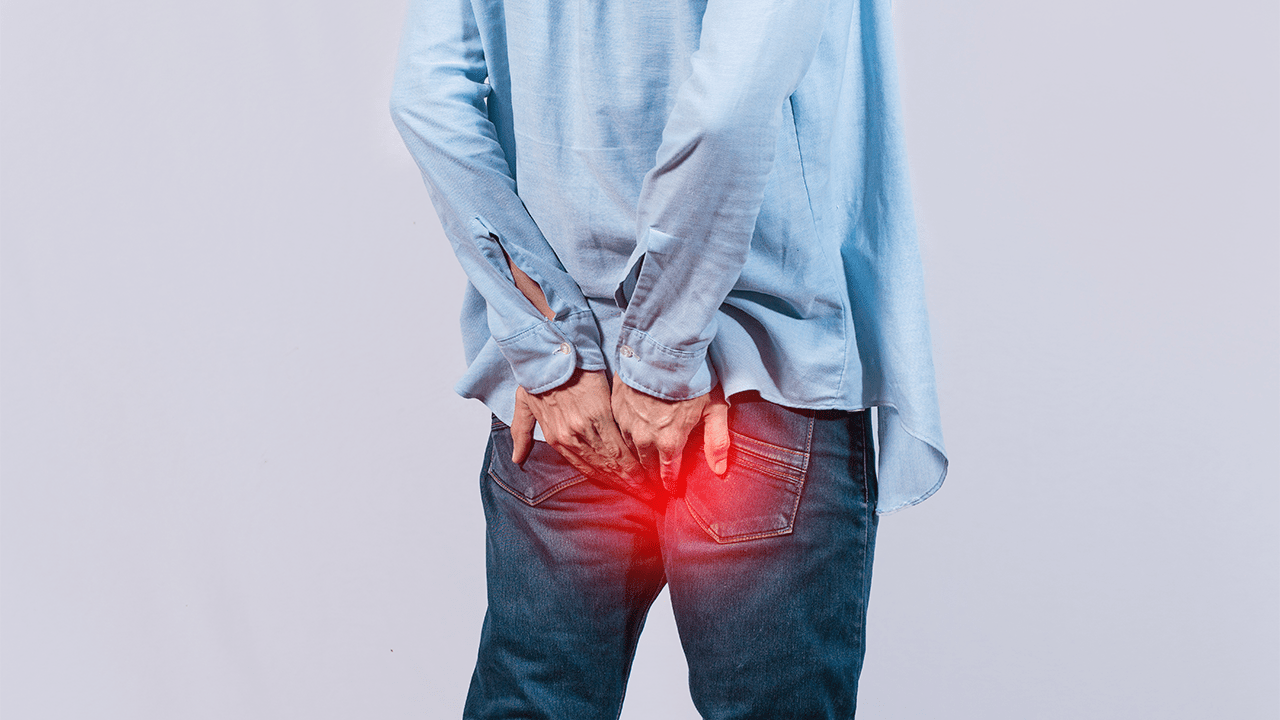PILES: Types, Causes, Symptoms & Treatment

What is Piles ?
Piles also known as hemorrhoids, are swollen and inflamed blood vessels located in the rectum or around the anus. They can occur both internally, inside the rectum, or externally, around the anal opening. Hemorrhoids can cause various uncomfortable symptoms, including pain, itching, and rectal bleeding, particularly during bowel movements.
The development of hemorrhoids is often linked to factors like straining during bowel movements, chronic constipation or diarrhea, pregnancy, obesity, a sedentary lifestyle, and aging. In some cases, there may be a genetic predisposition as well.
Treatment for hemorrhoids can range from lifestyle and dietary changes to over-the-counter medications and, in more severe cases, medical procedures or surgery. It’s important to consult with a healthcare professional for an accurate diagnosis and appropriate treatment if you suspect you have hemorrhoids or are experiencing symptoms.
Types Of Piles
Piles, also known as hemorrhoids, are classified into two main types: external piles and internal piles. These categories are based on their location and whether they are visible from the outside or not.
External Piles (External Hemorrhoids): These are haemorrhoids that develop under the skin around the anus. They are often visible and can be felt as lumps or small, swollen bulges. External piles may cause pain, itching, and discomfort, particularly when irritated or inflamed. They can be triggered by conditions such as straining during bowel movements or prolonged sitting.
Internal Piles (Internal Hemorrhoids): These are hemorrhoids that form inside the rectum, so they are not visible or palpable from the outside. Internal piles are typically painless and are often associated with symptoms like rectal bleeding, especially during bowel movements. They can be caused by factors such as chronic constipation, straining, and pregnancy.
Causes of Piles
Here are some common causes and contributing factors:
Straining During Bowel Movements: One of the most common causes is straining while passing stools. This can be due to constipation, hard stools, or spending excessive time on the toilet.
Chronic Constipation or Diarrhea: Irregular bowel habits and frequent constipation or diarrhea can increase the risk of developing piles.
Pregnancy: The increased pressure on the pelvic area during pregnancy can lead to the development of hemorrhoids.
Obesity: Excess body weight can put pressure on the rectal veins and contribute to the development of piles.
A Sedentary Lifestyle: Lack of physical activity and prolonged sitting or standing can lead to poor circulation in the rectal area, increasing the risk of piles.
Aging: As people get older, the tissues supporting the veins in the rectal area may weaken, making them more susceptible to swelling and inflammation.
Genetic Factors: Some individuals may be genetically predisposed to develop hemorrhoids.
Chronic Cough or Frequent Heavy Lifting: Conditions that cause repeated strain on the abdominal and rectal areas can contribute to piles.
Anal Intercourse: Aggressive or frequent anal intercourse can lead to the development of piles.
Dietary Factors: A diet low in fiber and high in processed foods can result in constipation and contribute to the development of hemorrhoids.
Symptoms
The severity and type of symptoms can vary from person to person. Some common symptoms of hemorrhoids include: Rectal Bleeding: This is one of the most common symptoms. Hemorrhoids can cause bright red blood to appear on toilet paper, in the toilet bowl, or on the surface of stool after a bowel movement. Anal Itching (Pruritus Ani): Hemorrhoids can lead to itching in the anal area, which can be quite uncomfortable. Pain or Discomfort: Depending on the location and size of the hemorrhoid, you may experience pain or discomfort, especially during bowel movements or when sitting. Swelling or Lump: You may feel a soft, swollen lump near the anus. This lump can be caused by an external hemorrhoid or a prolapsed internal hemorrhoid. Mucous Discharge: Some people with internal hemorrhoids may experience mucous discharge from the anus. Protrusion (Prolapse): In severe cases, internal hemorrhoids can prolapse or extend outside the anus, especially during bowel movements, and may need to be pushed back inside manually. Feeling of Incomplete Evacuation: Hemorrhoids can cause a sensation of not fully emptying the bowels after a bowel movement.
Diagnosis:
The diagnosis of piles (hemorrhoids) typically involves a medical evaluation by a healthcare professional. Here are the steps involved in diagnosing hemorrhoids:
Medical History: The healthcare provider will start by taking a detailed medical history. They will ask about your symptoms, including any pain, bleeding, or discomfort in the anal area. Information about your bowel habits and any relevant medical conditions will also be noted.
Physical Examination: A physical examination is often the next step. During this examination, the healthcare provider may visually inspect the anal area for external hemorrhoids and perform a digital rectal examination (DRE) to assess the presence of internal haemorrhoids. In a DRE, the healthcare provider inserts a gloved, lubricated finger into the rectum to feel for any abnormalities.
Proctoscopy or Anoscopy: In some cases, a proctoscopy or anoscopy may be performed. These are procedures in which a thin, lighted tube is inserted into the rectum to allow for a closer examination of the rectal and anal areas. This helps in identifying the location and severity of the hemorrhoids.
Colonoscopy or Sigmoidoscopy: If there are concerns about other conditions or if rectal bleeding is persistent, the healthcare provider may recommend a colonoscopy or sigmoidoscopy. These procedures allow for a thorough examination of the entire colon and rectum to rule out other causes of bleeding or discomfort.
The diagnosis of haemorrhoids is primarily based on the medical history and physical examination. Additional procedures like proctoscopy, anoscopy, colonoscopy, or sigmoidoscopy are reserved for cases with persistent or severe symptoms or when there is a need to rule out other gastrointestinal conditions.
Treatments
At Gurdaspur Medicity Hospital, we offer advanced and comprehensive surgical treatment services for piles to provide long-lasting relief to those suffering from this condition. Our experienced surgical team is committed to delivering effective, personalized care to ensure your comfort and well-being.
Our Piles Surgical Treatment Services Include:
Hemorrhoidectomy: A traditional surgical procedure for the removal of hemorrhoidal tissue.
Stapled Hemorrhoidopexy (PPH): A less invasive surgical method that lifts and removes excess tissue.
Laser Hemorrhoidectomy: Minimally invasive surgery that uses laser energy for tissue removal or shrinkage.
Transanal Hemorrhoidal dearterialization (THD): A minimally invasive technique using Doppler ultrasound to tie off hemorrhoidal arteries.
Ligation with Sphincterotomy: Surgical treatment that combines ligation of blood vessels with sphincter muscle incision to alleviate pressure on hemorrhoids.
Your health and comfort are our primary concerns, and our surgical team is dedicated to providing you with the best care and effective solutions. Contact us to learn more about our piles surgical treatment services and to schedule a consultation.”
Risk & Complications
While piles (haemorrhoids) are a common and often manageable condition, there can be risks and potential complications associated with them, especially in cases of severe or untreated hemorrhoids. Some of the risks and complications of piles include:
Bleeding: Hemorrhoids can cause rectal bleeding, which can range from mild spotting to more significant bleeding. Excessive bleeding can lead to anemia (a low red blood cell count), which may require medical attention.
Thrombosis: External hemorrhoids can develop blood clots (thrombosis) within them, leading to severe pain, swelling, and a firm lump near the anus. This condition, known as thrombosed hemorrhoids, often requires medical treatment.
Prolapse: Prolapsed internal hemorrhoids can protrude outside the anus, causing discomfort and making personal hygiene more challenging. Severe or long-term prolapse may require medical intervention.
Anal Fissures: The straining associated with hemorrhoids can lead to the development of anal fissures, which are painful tears in the lining of the anal canal.
Infection: If external hemorrhoids become irritated or injured, they can become infected, resulting in symptoms like redness, swelling, pain, and the presence of pus.
Strangulation: In rare cases, an internal hemorrhoid may become strangulated, which means the blood supply to the hemorrhoid is cut off. This can cause severe pain and requires immediate medical attention.
Recurrence: Hemorrhoids can sometimes recur even after successful treatment, especially if the underlying causes, such as chronic constipation, are not addressed.
Anemia: Chronic and severe bleeding from hemorrhoids can lead to anemia, which can cause fatigue, weakness, and other health issues.
Psychological Distress: Persistent pain or discomfort from hemorrhoids can lead to psychological distress, including anxiety and depression.
Complications of Treatment: Surgical procedures to treat hemorrhoids, while generally safe, can carry risks such as infection, bleeding, or complications related to anesthesia.
If Left Untreated
If left untreated, piles (hemorrhoids) can lead to various complications and worsening symptoms. It’s important to address piles promptly to avoid potential issues. Some of the complications that can arise from untreated piles include:
Increased Pain and Discomfort: Untreated hemorrhoids often lead to ongoing pain, itching, and discomfort, which can significantly affect your quality of life.
Bleeding: Hemorrhoids can cause rectal bleeding during bowel movements. Untreated hemorrhoids may lead to more frequent or profuse bleeding, potentially resulting in anemia (a condition characterized by a low red blood cell count) due to chronic blood loss.
Thrombosis: External hemorrhoids can develop blood clots (thrombosis), leading to severe pain, swelling, and a firm lump near the anus.
Prolapse: Internal hemorrhoids can prolapse or protrude outside the anus, causing discomfort and making personal hygiene more challenging.
Anal Fissures: The straining associated with untreated hemorrhoids can lead to the development of anal fissures, which are painful tears in the lining of the anal canal.
Infection: Untreated external hemorrhoids can become irritated or injured, potentially leading to infection.
Strangulation: In rare cases, an untreated internal hemorrhoid may become strangulated, meaning the blood supply to the hemorrhoid is cut off.
Psychological Distress: Persistent pain or discomfort from untreated hemorrhoids can lead to psychological distress, including anxiety and depression.
Recurrence: Hemorrhoids can sometimes recur even after successful treatment, especially if the underlying causes, such as chronic constipation, are not addressed.
Conclusion
At Gurdaspur Medicity Hospital, we offer a comprehensive range of services to address and treat piles (hemorrhoids) effectively. Our specialized medical team is committed to providing personalized care and tailored treatment options to meet your unique needs.
Your health and comfort are our top priorities, and we are dedicated to helping you find relief from the discomfort and inconvenience of piles. Contact us to learn more about our piles treatment services and to schedule a consultation.”


